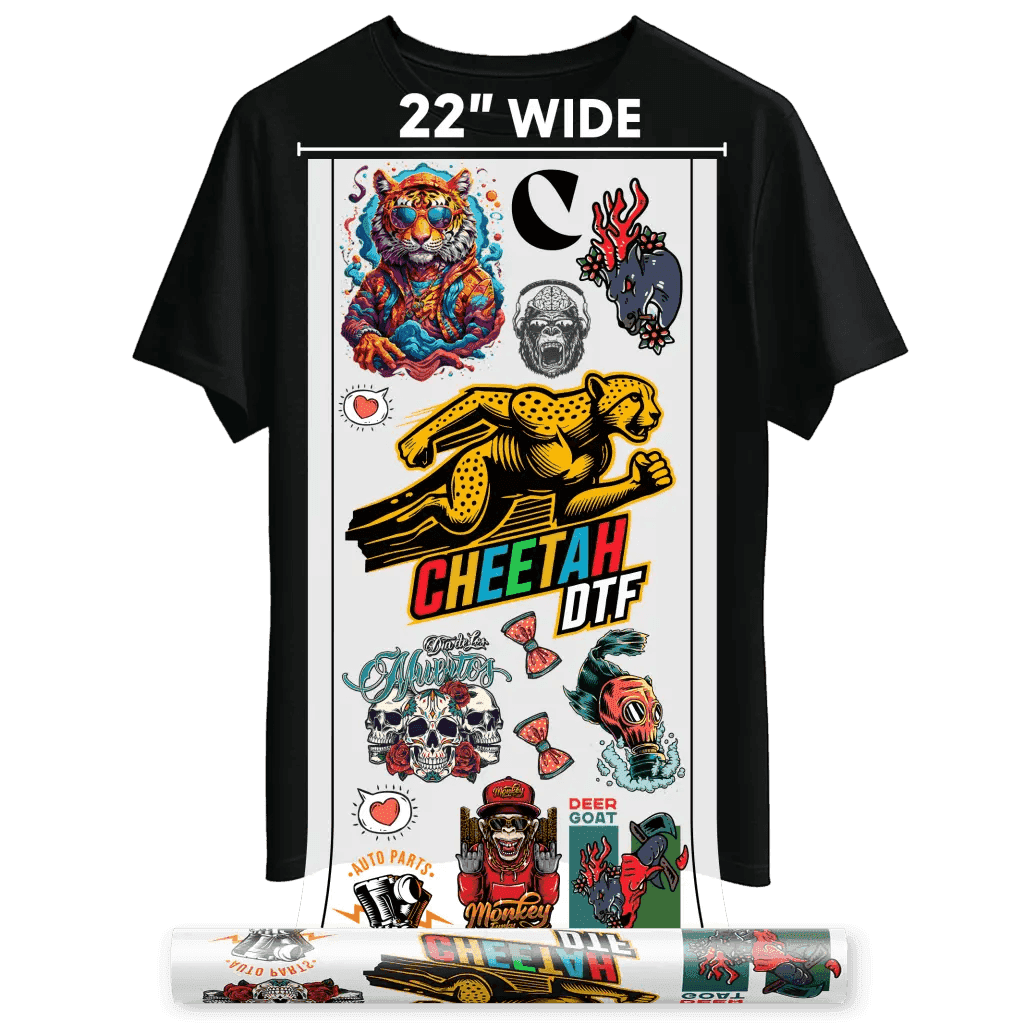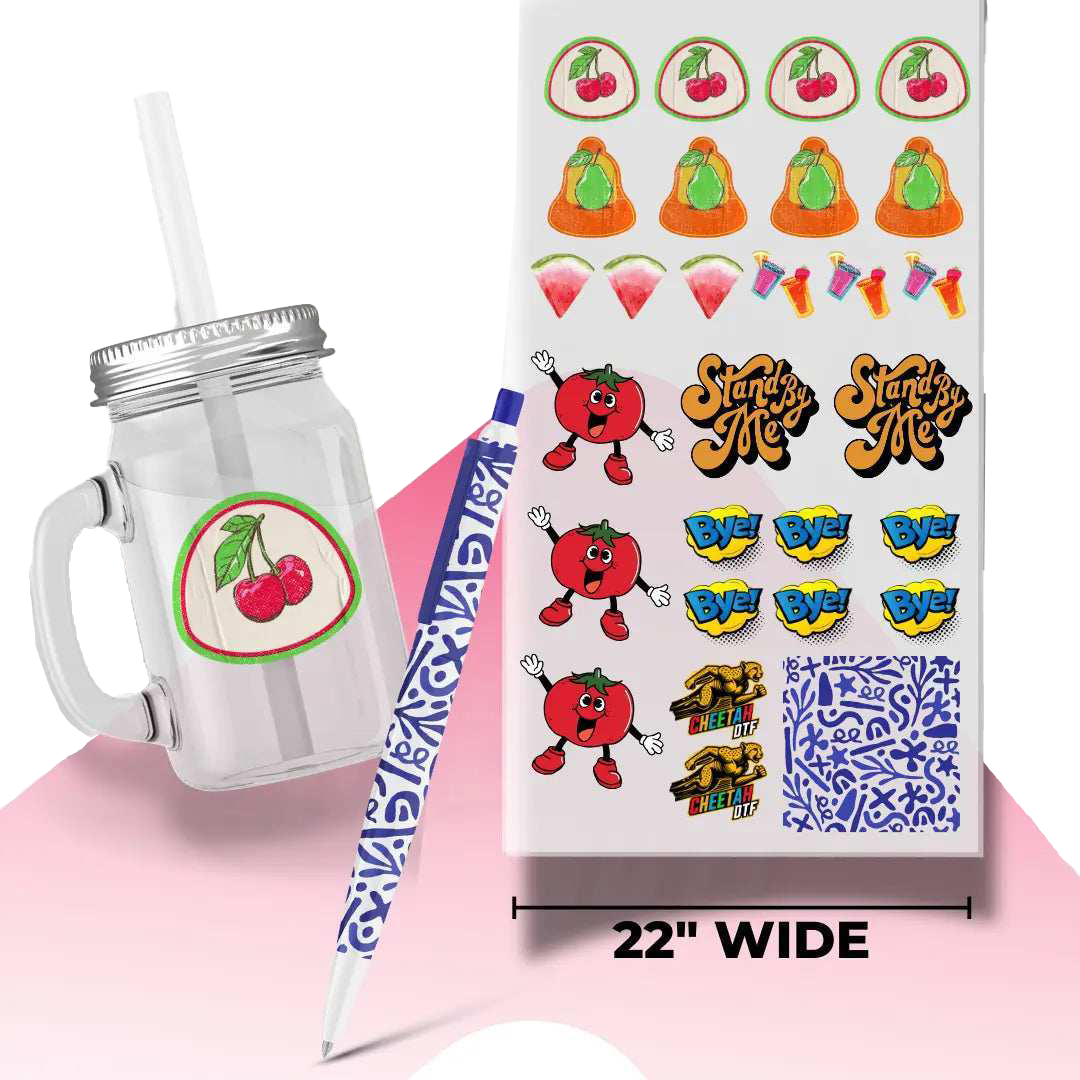How Does DTF Transfer Sheets Work?
DTF transfer sheets are a true revolution in the fast-changing world of custom apparel printing. They allow businesses and hobbyists to offer a cost-effective, versatile, yet long-lasting alternative to traditional printing methods such as screen printing and direct-to-garment printing. But how do DTF transfer sheets work, and why are they the new answer for printing companies like Cheetah Printing?
This detailed guide carefully walks you through everything you must know about DTF transfer sheets, beginning with the step-by-step creation of a DTF transfer and moving on to the benefits and applications. By the time you finish this guide, you should have a much clearer understanding of why DTF transfer sheets are changing the face of the custom printing industry.
What Are DTF Transfer Sheets?
DTF transfer sheets are films specifically manufactured for Direct-to-Film printing. Unlike HTV or sublimation, these sheets can transfer full-color graphics directly to almost any substrate, including cotton, polyester, blends, leather, etc.
The DTF process involves directly inputting the design from the DTF printer onto a particular unique film. This design is then powder adhesive-coated, cured, and heat-pressed on the desired surface. The result is a vivid, durable, and flexible print that withstands many washes.
How Does DTF Transfer Sheets Work?
1. Design Preparation
The first step of DTF is creating a design. High-resolution designs, usually made by graphic designers, are done on software such as Adobe Photoshop, Illustrator, or CorelDRAW.The colors, details, and fine elements of the design must be crisp, as DTF printing captures the intricate details in print.
Key Tips for Design Preparation:
- Use high-resolution images (300 DPI) for the best print quality.
- Ensure that colors are CMYK compatible.
- Do not use fragile lines because they may not print well.
2. Printing on DTF Transfer Film
As soon as the design is completed, it is ready to be printed on that unique DTF film through DTF printing. DTF printing does not use DTG printing, as this type of print directly transfers the design onto an article of clothing. JTF, otherwise known as design transfer film, prints the design upside-down on the transfer film for the JDF.
Key Steps in the Printing Process:
- Printer Type: Use a specialized DTF printer with a CMYK + White ink configuration,
- Printing Order: with which first, you print white ink (to serve as the base) and then CMYK colors.
- Film Type: Utilizes PET (polyethylene terephthalate) film mainly designed for DTF transfers.
3. Application of Powder Adhesive
After the print is done on the DTF film, the next step is to add powder adhesive to the design. This powder is critical in ensuring the pattern sticks well to the fabric.
Key Steps in the Adhesive Application:
- Sprinkling: It can be applied to the back of the printed design. Manual or automatic methods, such as powder adhesive, are used.
- Shaking Off Excess Powder: Excess powder is shaken off to leave only a coat over the design's surface.
- Quality Check: Ensure an even application of adhesive powder, as the uneven application may cause uneven adhesion.
4. Curing the Powder Adhesive
Once the adhesive powder has been placed, it must be melted to make it effective in bonding, as this is critical in assisting strong adhesion in the fabric.
Key Steps in the Curing Process:
- Temperature: Use a curing oven or a heat press set at 160 -180 degrees Celsius.
- Time: Cure the powder adhesive for 2- 3 minutes.
- Observation: Check whether the powder is uniformly cured to avoid application problems.
5. Transferring the Design to Fabric
The final step is transferring the design from the DTF transfer sheet to the fabric using a heat press.
Steps to Transfer the Design:- Heat Press Settings: Heat press it for 10-15 seconds at a temperature between 160 and 180° C.
- Pressure: For better adhesion, apply medium to firm pressure.
- Peel Type: Once done, either cold or hot, peel the transfer sheet, depending on the type of DTF film.
The output is a vibrant, flexible, and, most importantly, durable result ready to wear.
Benefits of DTF Transfer Sheets
1. Versatility
DTF transfer sheets perform excellently on all kinds of fabrics, including cotton, polyester, nylon, and leather. Unlike sublimation, DTF functions perfectly on dark or light fabrics.
2. High Durability
Both short- and long-lasting DTF transfers are known for their resistance to washing. The designs do not crack, fade, or peel after prolonged use.
3. Cost-Effectiveness
Direct-to-film printing is cheaper than regular screen printing, especially at small batch runs. It requires little equipment and is simpler.
4. Full-Color Prints
Unlike HTV, which is limited to one color per layer, DTF allows for high-resolution, full-color designs with gradients, fine details, and photorealistic effects.
5. Minimal Waste
Compared to screen printing, it generates less waste and is considered environmentally friendly.
Why Cheetah Printing Chooses DTF Transfer Sheets
Cheetah Printing places a premium on efficiency, quality, and customer satisfaction. The company utilizes DTF transfer sheets to offer its clients designs that are vibrant, long-lasting, highly versatile, and suitable for various fabrics. Here are some compelling reasons why Cheetah Printing uses DTF transfer sheets:
- High Production Speed: It is quicker production in comparison to screen printing.
- Superior Print Quality: It accurately captures excellent detail and gradients.
- Cost-Effective for Small Orders: No large setup is required, and no bulk orders are placed.
DTF Transfer Sheets: Revolutionizing Custom Printing
Due to their superior detailed prints and big color palettes, DTF transfer sheets will likely become the preferred commercial transfer method. This technology can reproduce even the most intricate designs, such as photographs or detailed logos, with smooth gradients and sharp lines. DTF becomes even better and quite different from sublimation because it works on light and dark fabrics, thus widening its use.DTF is an excellent solution for your custom apparel needs of t-shirts, hoodies, caps, and non-clothing items like bags and accessories.
Versatility Across Fabric Types
Another essential aspect of DTF transfer sheets is application versatility. Compared to other printing methods, DTF prints on all different textile forms, from cotton, polyester, and blends to gloves, leather, nylon, and beyond. Light or dark fabric, bright or dull picture, the DTF process guarantees an output that is vibrant and high quality for every fabric. Versatility is one factor that makes DTF dearest to businesses mindful of commercializing different types of customized apparel or promotional items.
High Durability and Quality
Another benefit of DTF transfer sheets is their high durability. Prints produced via the DTF technology can last long while retaining their brightness after frequent washes. Unlike conventional printing methods, some DTF transfers do not crack, peel, or fade with time; they ensure designs last long with beauty. Therefore, DTF is ideal for customers looking for beautiful, lasting, and high-quality custom prints.
Minimal Waste and Environmental Impact
Compared to conventional techniques such as screen printing, the DTF printing process has a negligible adverse effect on the environment. Less waste means it is a much greener method of printing on demand. Furthermore, DTF printing can take a business from small to medium orders in hours, leaving behind scant material waste. It attracts businesses and consumers who favor harm-free options, making the process eco-friendly.
Conclusion
DTF transfer sheets have revolutionized custom printing by offering access to a versatile solution at an affordable cost with quality equal to that found in commercial uses. Cheetah Printing's expertise will allow consumers to enjoy bursting designs on anything from T-shirts and many things in between with a vibrant and hardy life. DTF printing opens doors to people from all walks of life: business owners, apparel brands, or even creative individuals wanting to opt for customization. To learn more and experience firsthand what will be the future of custom print space, get in touch with Cheetah Printing.
FAQ
Can I use DTF transfer sheets on any fabric?
DTF transfer sheets can be used for cotton, polyester, blends, leather, nylon, and more.
Do DTF transfers peel or crack over time?
Not at all. DTF transfers are pretty durable and can handle many washes without cracking, peeling, or fading.
Is DTF better than screen printing?
DTF is best suited for short runs, intricate designs, and full-color prints; screen printing is more applicable when the quantity is enormous and the designs simple.
How long does it take to create a DTF transfer?
It can take as short as 30 minutes compared to traditional print processes.
How do I care for garments printed with DTF transfers?
Wash in cold water, inside-out, and then use the lowest tumble dry to maintain vibrancy; avoid fabric softeners.


